With solar panels getting cheaper, building your own home solar system is more affordable than ever.
While solar batteries are still pricey, new technologies such as lithium phosphate have made them worth the cost.
You can save money by setting up the solar system yourself. Don’t worry, it’s easier than you think especially if you get a solar system kit.
If you are thinking about building a solar power system for your home, cabin or RV, this guide is for you.
A quick note: we’ll focus only on off-grid solar power systems. If you want a grid-tie or hybrid system, you’ll need to have a certified electrician set it up.
Can You Build A Solar System Yourself?
Building a solar system might sound like a daunting task that can only be done by a pro. Things like wiring can be particularly tricky and even dangerous if not done right.
It’s true that a home solar system is best installed by a pro. In addition to wiring, they can also help you determine your energy needs, solar panel sizes, wiring gauge, battery bank sizing and other specifics.
But there’s also a way to set up a DIY solar system. What you need is a solar kit such as those sold by ShopSolarKits.com.
With a solar kit, you don't need to do any complex calculations to size individual components like the charge controller, inverter and wires.
These kits come pre configured with perfectly sized components. All you need to know is how much solar power and battery storage you need.
Then you can get a kit for 1000W, 5000W, 10000W and so on. Solar kits come with detailed instructions to help you wire everything correctly.
You can certainly build your own home solar system from scratch if you have the skills and knowledge. But for us non-engineers, a solar kit is the way to go.
3 Things To Consider When Building A Home Solar System
Before you begin planning and laying out your solar system, there are some important things to consider.
1. Budget
Your budget will determine how big of a solar system you’ll install.
You might want a solar system that covers all your home power needs, but budget constraints may not allow it.
The beauty with solar systems is that they are relatively easy to upgrade and expand over time. So you can start small and get more solar panels or extra batteries later.
Figure out how much you can spend on the project, and then size your solar system around that.
One advantage of building your own solar system is that you save money on installation costs.
2. Size
The other important consideration is the size of the solar system.
First calculate how much power you need. Then you can figure out how much solar power and storage capacity will meet your needs.
3. 12V vs. 24V vs. 48V System
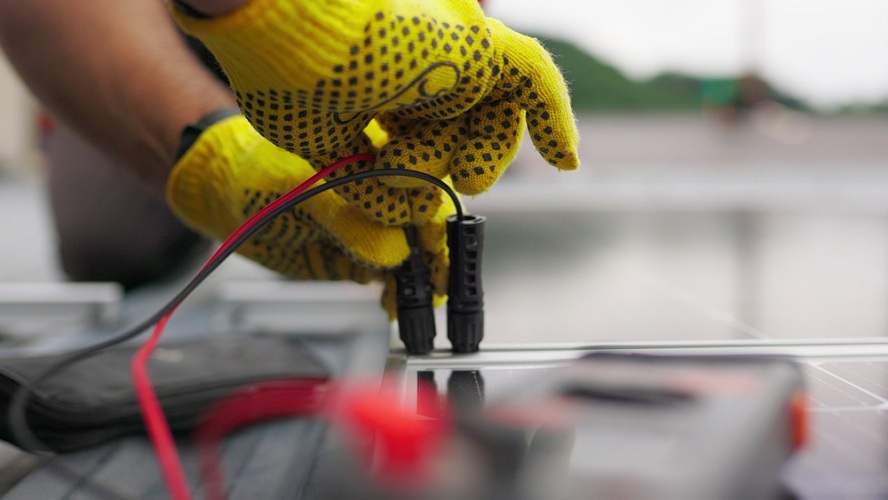
Finally, decide what system voltage you want to work with.
Generally, the bigger the solar system, the higher the voltage should be. That’s why most big home solar systems are 48V.
Smaller systems for an RV or a shed can be 12V or 24V.
Renogy recommends a 12V system if you plan to produce less than 1000W of solar power, 24V for 1000 to 2000W and 48V for more than 2000W.
The main advantage of a higher voltage system is that you can generate a lot of power with less current.
This lets you use thinner wires, which can be a big cost saver. Electrical wires, especially the low gauge ones, are not cheap.
Calculating Your Energy Needs
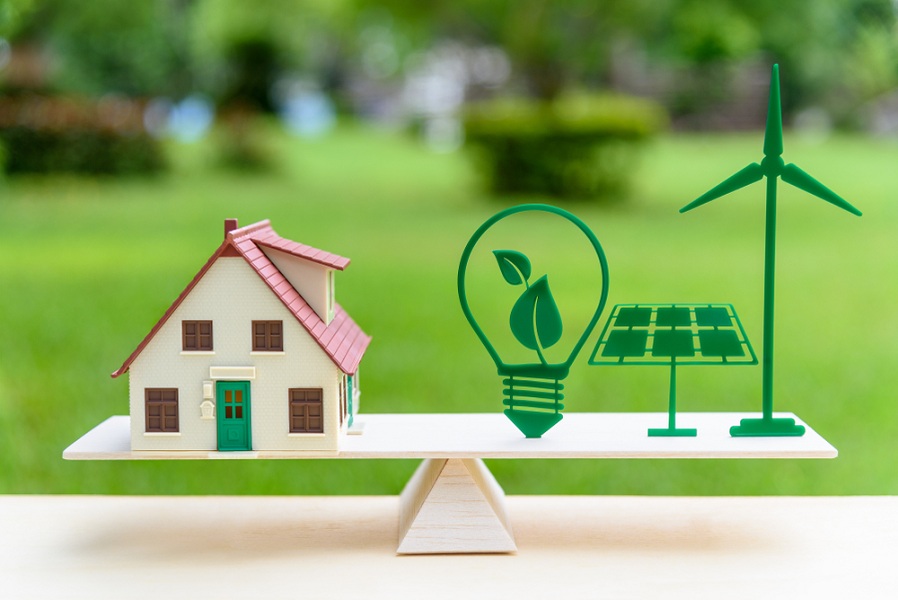
The first step to building your own home solar power system is calculating your energy needs.
This will be the basis on which you choose every component of the solar system. It also makes it easy to choose the right solar kit if you decide to go that route.
If you plan to power your entire home, just check the power bills for the previous 12 months. Add up the number of kilowatt hours for each month and then divide by 12 to get one month’s average.
If you only plan to power a few appliances with solar, multiply each appliance’s wattage by the number of hours it runs each day.
Add the daily power consumption for each appliance to see how much solar power you’ll need each day.
If you also plan to charge devices like a phone, bluetooth speaker and laptop, also account for their power consumption.
Multiply each device's capacity (in Wh) by the number of times you think you’ll need to recharge it each day. Then add the daily power consumption for each device and add the figure to that of appliances.
You can also use a calculator to estimate your daily power consumption.
Solar System Equipment
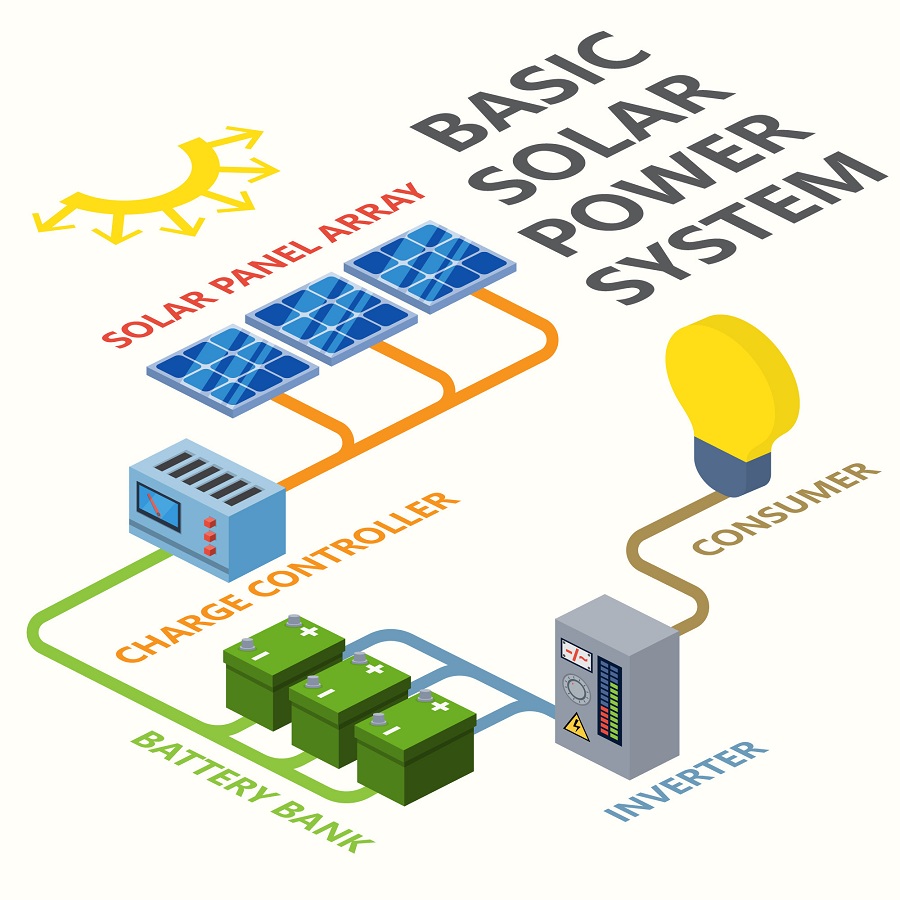
Now you can start picking the various components of your solar system. It’s crucial that you size each piece of equipment correctly.
I have written an in-depth guide on how to size a solar system including the batteries, charge controller, solar panels and inverter.
All the calculations are provided in the guide, so I won’t get into the details here. I’ll just give a quick summary of what equipment you need.
Solar Panels
You need enough solar panels to match your daily power consumption, and then some. Solar panels are relatively cheap so you can exceed your daily consumption without breaking the bank.
If you use 12kWh daily, get solar panels that can produce 15kWh each day. The extra margin also covers for the fact that solar panels typically produce less power than they are rated for.
If you are in a location with unreliable sunshine (fewer peak sun hours), get extra solar panels to account for the reduced power production.
Remember to check whether you have adequate space on the roof for the solar panels and that there’s no shade.
If there isn’t space, you can mount the panels on the ground.
In most cases, rigid solar panels are the best. They are easy to mount and they are cheaper. But for uneven surfaces like the roof of an RV or a boat, you may need flexible solar panels.
Solar Charge Controller
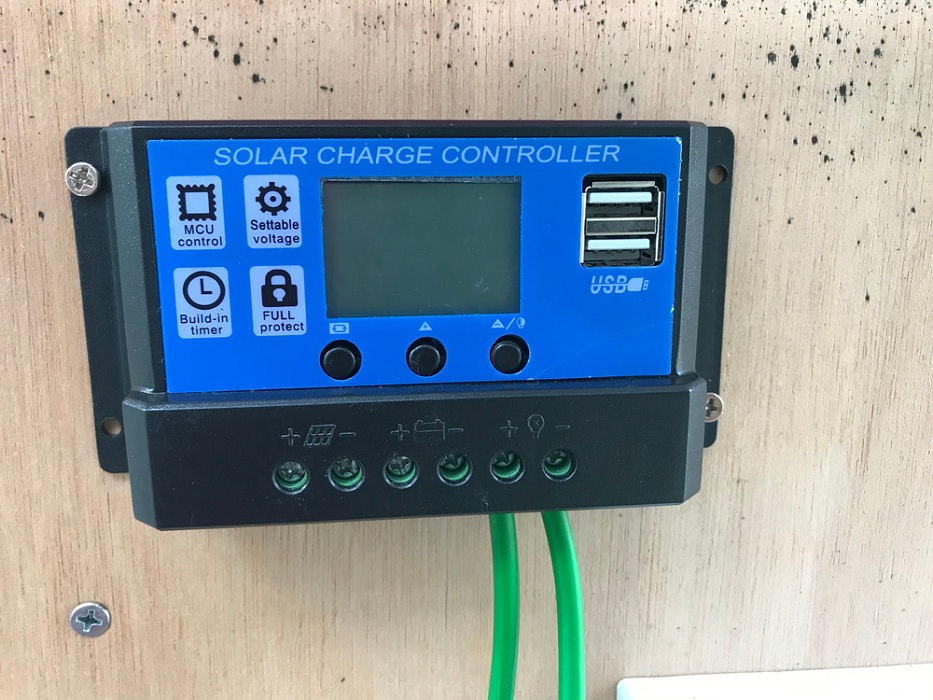
The solar charge controller regulates power coming from the solar panels and into the battery bank. This prevents overcharging and extends battery lifespan.
You need a charge controller that’s the same voltage as your solar system. For instance, a 48V charge controller for a 48V system.
It also needs to be able to handle more amps than the amount flowing in your solar system. Refer to the linked guide above for all the sizing calculations.
As for the type of charge controller, go for an MPPT charge controller. It’s better and more efficient compared to PWM charge controllers.
Battery Bank
This is where most of your money will go. Lithium batteries are especially pricey, but they are worth it.
They last long, take up less space, and you can safely discharge them to 80%. Newer lithium phosphate (LiFePO4) batteries are especially great for solar systems as they last longer than any other type of lithium batteries.
If you are on a budget, lead acid batteries are still pretty good. Just know that you’ll need more of them since you can only discharge them to 50%. You’ll also have to replace them in 3-5 years (compared to 5-10 years for lithium batteries).
Lead acid batteries also take up more space.
Tip: Remember to take into account days of autonomy (when you can survive on just stored power) when sizing your battery bank. Multiply your daily consumption by at least 3 days of autonomy then size your batteries based on that.
Inverter
The inverter converts DC power in the battery to AC power that you can use around the house. The inverter you get should be able to handle the total amount of power your appliances draw at the same time.
These days, there are newer and fancier multifunction inverters. Our favorite ones are the all-in-one inverter chargers that contain a solar charger controller, an inverter and a battery charger.
Such an inverter reduces how much wiring you need to do. It also lets you charge your battery bank from other sources other than solar (e.g. from a gas generator).
Other Components
Choosing A Solar System Kit
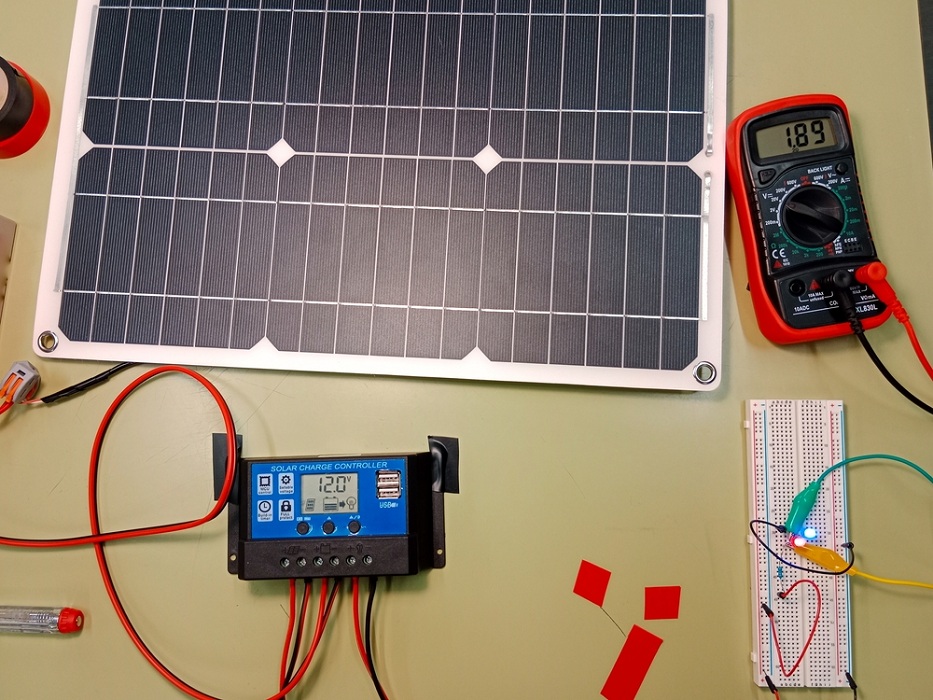
If you plan to buy a solar kit, it makes your work much easier. Just find a kit that offers the solar output and battery storage you need.
ShopSolarKits.com has options ranging from 1000W of output and 1.3kWh of storage to 13,000+ W of output and over 20kWh of storage.
Renogy also offers solar kits but they don't include batteries and an inverter - just solar panels and a solar charge controller.
EcoWorthy has several complete kits that include batteries like this 200W 512Wh starter kit for RVs.
Can I Build A Home Solar Power System With A Solar Generator?
Yes, you can certainly use a solar generator to build a solar power system. In fact, that’s the best choice if you want to do minimal wiring or if you want a power station you can take with you.
You can get a complete solar generator kit from ShopSolarKits.com that includes solar panels and extra battery packs.
Individual brands like Goal Zero, Jackery and Bluetti also sell their own pre-configured kits.
One of the best picks for home backup is the Goal Zero 6000X kit that comes with 10.8kWh of storage and a transfer switch. You can combine it with one of their solar panel kits.
The Titan 1500 Flex Kit with 1.5kW of solar and 4kWh of storage is a good choice for boats and RVs.
Of course, you can also build your own solar generator kit. Pick a solar generator of your choice, then buy solar panels separately. We recommend getting an expandable solar generator that gives you an option of adding more storage in the future.
Other than wiring and maybe a transfer switch, you don't need to buy other components since the inverter and charge controller are already built into the solar generator.
Note: The biggest limitation of a solar generator kit is that it has limited output (usually 2000-3500W for the largest kits). So you can’t power your entire home. If you need to power everything in your house, get a solar system or a solar system kit.
Bottom Line
That’s everything you need to know about building your own home solar system. All that’s left is installation and wiring.
That shouldn’t be too hard with a solar system or solar generator kit - these are easier to wire and come with detailed instructions.
To install a regular solar system, you’ll need some skills and knowledge in electricity and wiring. Be especially careful if you plan to integrate it into your home. We recommend leaving that part to a professional electrician.


